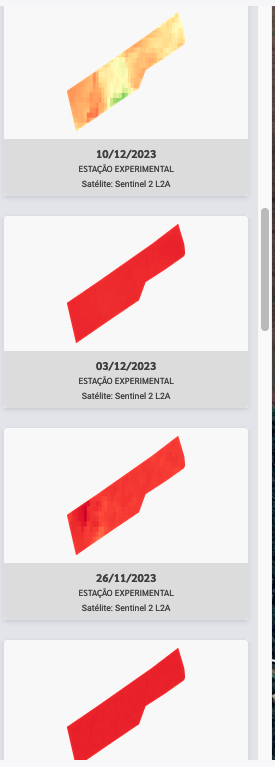I am reaching out to seek some guidance regarding a peculiar issue I’ve encountered while working with NDVI images, specifically related to the dominance of the red color without variation in certain images.
I have been diligently processing NDVI images for my project, and overall, the results have been satisfactory. However, I’ve noticed that in some instances, the NDVI images exhibit an unexpected behavior – the presence of only the red color without any discernible variation.
Here is my EvalScript:
private String getEvalScript() {
return "//VERSION=3\n" +
"function setup() {\n" +
" return {\n" +
" input: [\"B04\", \"B08\", \"dataMask\"],\n" +
" output: { bands: 4 }\n" +
" };\n" +
"}\n" +
"\n" +
"const ramp = [\n" +
" [\"-1\", \"0x000000\"], // Black\n" +
" [\"-0.2\", \"0xa50026\"], // Dark Red\n" +
" [\"0\", \"0xd73027\"], // Red\n" +
" [\"0.1\", \"0xf46d43\"], // Light Orange\n" +
" [\"0.2\", \"0xfdae61\"], // Dark Orange\n" +
" [\"0.3\", \"0xfee08b\"], // Light Yellow\n" +
" [\"0.4\", \"0xffffbf\"], // Pale Yellow\n" +
" [\"0.5\", \"0xd9ef8b\"], // Light Yellow-Green\n" +
" [\"0.6\", \"0xa6d96a\"], // Medium Green\n" +
" [\"0.7\", \"0x66bd63\"], // Dark Green\n" +
" [\"0.8\", \"0x1a9850\"], // Very Dark Green\n" +
" [\"1\", \"0x006837\"] // Forest Green\n" +
"];\n" +
"const visualizer = new ColorRampVisualizer(ramp);\n" +
"function evaluatePixel(samples) {\n" +
" let ndvi = index(samples.B08, samples.B04);\n" +
" let imgVals = visualizer.process(ndvi);\n" +
" return imgVals.concat(samples.dataMask);\n" +
"}\n";
}
Not sure if I am getting those dominant red color because cloud coverage, but is there a way to check if the image is covered and also get the percentage of clouds?


